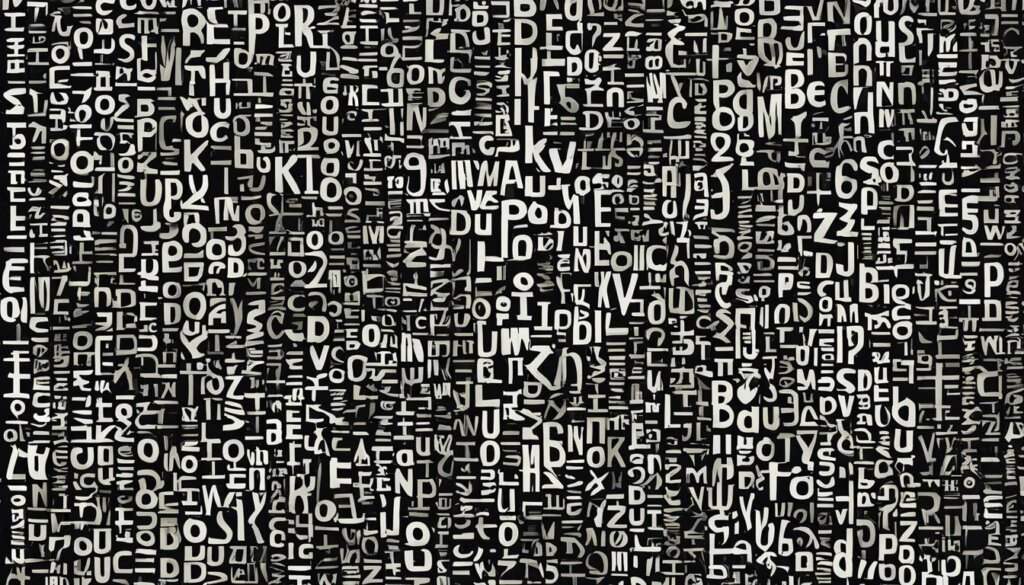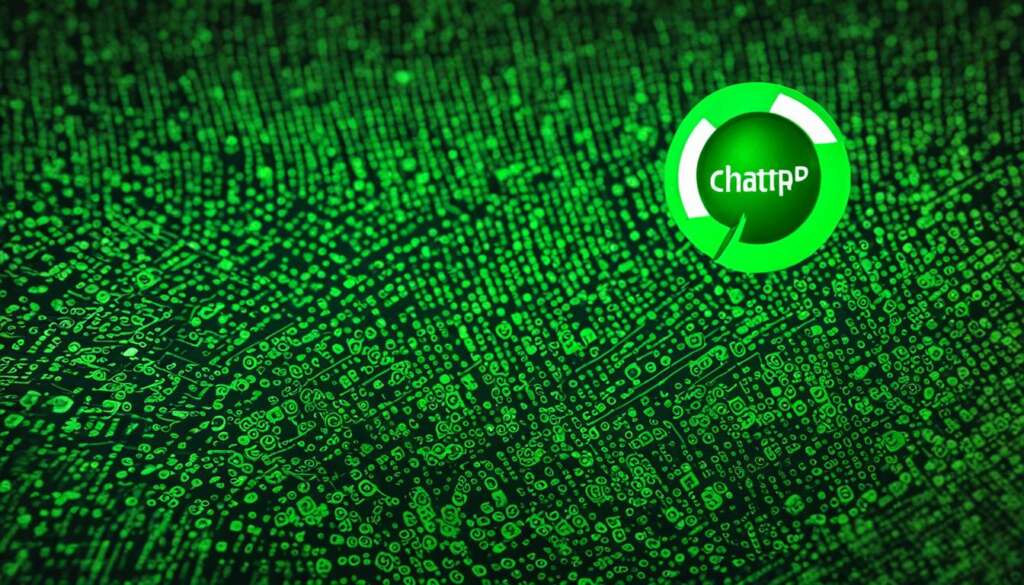Table of Contents
In today’s era of AI-generated content, it has become crucial to verify the authenticity and origin of text produced by models like ChatGPT. Whether you are an educator or a content creator, knowing how to ask ChatGPT if it wrote something and verifying ChatGPT-generated content is essential.
AI-generated content can be highly convincing, but it’s important to have a process in place for authorship verification. This article will guide you through various methods to inquire ChatGPT and seek authorship verification. We’ll discuss how to validate the origin of the content and ensure its authenticity.
By examining the nature of AI-generated content, understanding the factors affecting model accuracy, and acknowledging the limitations of authorship verification, you’ll be equipped with the necessary knowledge to navigate this evolving landscape. Let’s dive into the details of verifying ChatGPT generated content and ensure its credibility.
Stay tuned to uncover the strategies and best practices for effectively verifying the authorship of ChatGPT-generated content.
Understanding the Nature of AI-generated Content
AI-generated content is constantly evolving, and it is essential to understand its nature when seeking authorship verification. OpenAI, the organization behind ChatGPT, emphasizes the importance of controlling AI usage and implementing appropriate AI classification techniques.
When it comes to using AI-generated content in educational settings, OpenAI recommends avoiding punitive measures based solely on AI classification. There can be instances where AI is mistakenly classified as human and vice versa. Therefore, it is crucial for educators to adopt holistic assessment approaches.
“AI-generated content should not be used as a singular factor to punish students.”
Educators are advised to consider various indicators of content authenticity, including the analysis of writing reports generated by ChatGPT. By evaluating student work through a multifaceted lens, educators can differentiate between AI-generated content and human-authored work. This approach ensures fair evaluation and prevents any unintended consequences resulting from AI classification inconsistencies.
Furthermore, creating assignments that require critical thinking and cannot be easily solved with AI assistance is a proactive measure to maintain the integrity of the educational process. By posing challenges that necessitate human creativity and reasoning, educators can foster intellectual growth while minimizing the reliance on AI-generated content.
“While AI-generated content can be a valuable tool, it should not replace the cognitive abilities and unique perspectives of human students.”
Understanding the nature of AI-generated content and employing effective AI classification methods is vital for both content creators and educators. By doing so, they can ensure the responsible and controlled usage of AI technology while appreciating its benefits within the appropriate context.
Factors Affecting Model Accuracy
The accuracy of ChatGPT in identifying its own authorship can vary depending on several factors. Understanding these factors is crucial when seeking authorship verification.
Model Accuracy: The accuracy of ChatGPT’s authorship verification increases with the amount of text being submitted to it. Providing more text for analysis enhances the model’s ability to accurately identify its own generated content.
Document-Level Classification: In the hierarchy of classification levels, document-level classification exhibits higher accuracy compared to paragraph-level classification, which in turn surpasses sentence level. By examining the text at a broader level, document-level classification enables more accurate identification of authorship.
Dataset Composition: ChatGPT’s model accuracy is influenced by the similarity of the text to its training dataset. The dataset primarily comprises English prose written by adults. Therefore, when verifying authorship, it is important to consider the composition of ChatGPT’s training dataset and assess the similarity of the text in question.
Considering these factors enhances the accuracy of authorship verification when utilizing ChatGPT. It allows educators and content creators to make informed decisions regarding the authenticity and origin of AI-generated content.
Example:
“The accuracy of ChatGPT’s authorship verification can vary depending on different factors. The model’s accuracy tends to increase with the amount of text provided for analysis. Document-level classification exhibits higher accuracy compared to paragraph-level classification, and paragraph-level classification surpasses sentence level. Furthermore, the model’s accuracy is influenced by the composition of its training dataset, which primarily consists of English prose written by adults. It is important to consider these factors when seeking authorship verification of ChatGPT-generated content.”
Factors Affecting Model Accuracy
| Factors | Effect on Model Accuracy |
|---|---|
| Amount of Text Submitted | Higher accuracy with more text provided |
| Classification Level | Document-level > Paragraph-level > Sentence level |
| Dataset Composition | Similarity to training dataset affects accuracy |
Limitations of Authorship Verification
While authorship verification is crucial for determining the origin of AI-generated content, it is important to acknowledge the limitations of ChatGPT’s verification process.
The classifier used for authorship verification is not specifically trained to identify AI-generated text after it has been heavily modified post-generation. This means that if the generated text has undergone substantial editing, the verification may not accurately identify it as AI-generated.
Furthermore, the classifier may occasionally flag other machine-generated or highly procedural text as AI-generated, leading to potential false positives.
To improve the accuracy of authorship verification, it is advisable to focus on analyzing more descriptive portions of the text rather than heavily modified or procedural sections.
It is important to be aware of these limitations when using authorship verification tools and to interpret the results accordingly.

Inquiry Methods for Authorship Verification
When it comes to inquiring whether ChatGPT authored a particular piece of content, there are various inquiry methods that can be used to validate its origin. These methods play a crucial role in ensuring the authenticity of AI-generated text and can help content creators and educators confidently assess the authorship. Exploring multiple approaches can provide a comprehensive understanding of the content’s origin and shed light on its AI-generated nature.
Providing a Prompt and Analyzing the Generated Response
One effective approach is to provide a specific prompt to ChatGPT and carefully analyze the generated response. By examining the linguistic patterns, formatting, and style of the text, it is possible to identify indicators of ChatGPT’s authorship. AI-generated content often exhibits distinct characteristics that differentiate it from human-written content, such as an over-reliance on certain phrases, unusual sentence structures, or inconsistent tone. Identifying these indicators can help verify the content’s origin.
Asking Specific Questions and Evaluating Authenticity
Another method involves asking ChatGPT targeted questions related to the content or references used in the text. By posing specific queries, content creators can assess the depth of ChatGPT’s knowledge and determine whether the generated response aligns with the expected level of expertise. This approach enables a more direct evaluation of the authenticity of the AI-generated content, as ChatGPT’s ability to respond accurately to specific inquiries can provide valuable insights into its authorship.
Comparing Responses Over Time and Cross-Referencing Sources
For enhanced authorship validation, comparing ChatGPT’s responses over multiple interactions or time-periods can be beneficial. By examining the consistency, coherency, and evolution of the generated text, content creators can gain a deeper understanding of ChatGPT’s characteristic patterns and deviations. Additionally, cross-referencing the generated content with external sources, such as reputable publications or established databases, can help establish the accuracy and originality of the text. This approach provides context and supports the validation of content origin.
Inquiry methods for authorship verification offer valuable insights into validating the origin of AI-generated content. By analyzing the response patterns, asking specific questions, and cross-referencing sources, content creators and educators can confidently ascertain the authenticity of ChatGPT’s written work.
To further illustrate the importance of inquiry methods for authorship verification, the following table provides a comparison of different approaches:
| Inquiry Method | Advantages | Limitations |
|---|---|---|
| Providing a Prompt and Analyzing the Generated Response | Can reveal linguistic indicators of AI authorship | May require careful analysis and domain expertise |
| Asking Specific Questions and Evaluating Authenticity | Directly assesses ChatGPT’s knowledge and expertise | Dependent on the accuracy and depth of ChatGPT’s response |
| Comparing Responses Over Time and Cross-Referencing Sources | Provides insights into consistency and originality of content | Requires additional external sources for cross-referencing |
By employing these inquiry methods and utilizing their respective advantages, content creators and educators can confidently validate the origin of AI-generated content and ensure its authenticity.
Conclusion
Authenticating and verifying the origin of ChatGPT-generated content is crucial for ensuring its authenticity. By understanding the nature of AI-generated content and its limitations, educators and content creators can develop effective methods for authorship verification.
Implementing inquiry techniques and analyzing the responses generated by ChatGPT can provide valuable insights into the authenticity of the text. It is important to note that AI models like ChatGPT are constantly evolving, and the verification process must be adapted accordingly to ensure accuracy.
By employing various inquiry methods and considering the factors that may affect model accuracy, content creators can enhance their chatGPT content verification process. However, it is imperative to remain mindful of the limitations of authorship verification, such as the inability to identify heavily modified text or potential misclassification of machine-generated or procedural content.
Overall, by taking a comprehensive approach to chatGPT content verification, including understanding the nature of AI-generated content and implementing appropriate inquiry techniques, educators and content creators can confidently authenticate the origin of chatGPT written content.
FAQ
How can I ask ChatGPT if it wrote something?
One approach is to provide a prompt to ChatGPT and analyze the generated response for indicators of authorship. Another method is to ask ChatGPT specific questions related to the content or references used, which can help evaluate its authenticity.
What are the factors affecting model accuracy in authorship verification?
The accuracy of ChatGPT in identifying its own authorship can vary depending on factors such as the amount of text submitted, the level of classification (document, paragraph, or sentence), and the similarity of the text to its training dataset.
What are the limitations of authorship verification with ChatGPT?
The classifier used for authorship verification is not trained to identify heavily modified post-generated text accurately. Additionally, it may occasionally flag other machine-generated or highly procedural text as AI-generated.
What inquiry methods can be used for authorship verification with ChatGPT?
Inquiry methods can include providing a prompt and analyzing the generated response, asking specific questions related to the content or references, comparing responses over time, or cross-referencing with other sources to validate the origin of the content.
Why is authorship verification important for ChatGPT-generated content?
Authorship verification ensures content authenticity and validates its origin. It helps educators and content creators understand the nature of AI-generated content and develop effective methods to evaluate its authenticity.
How should the verification process be adapted for evolving AI models like ChatGPT?
The verification process should be adapted by keeping up with the evolving nature of AI models like ChatGPT and considering their limitations. Implementing inquiry techniques and analyzing generated responses can provide valuable insights into the authenticity of the text.


